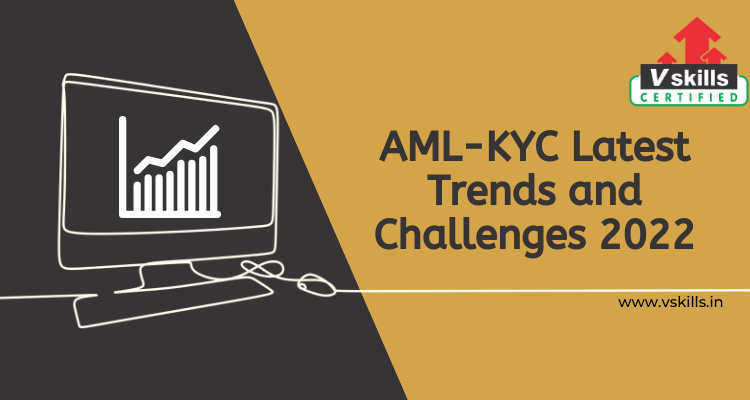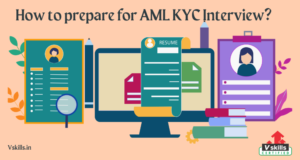Curious to know about the latest trends and challenges that lie ahead in the AML-KYC domain for the year 2022? All the Anti-Money Laundering (AML) and Know Your Customer (KYC) efforts are carried out on the premise that: good people, when equipped with good technology, healthy practices, and good processes can help in identifying criminal behaviour and activities while meeting the requirements of AML and KYC regulations. Banks and financial institutions need to have a robust program and also need to be constantly updated with new regulations.
Opportunities and Trends in AML-KYC
In discussing the opportunities and trends to look out for, we shall seek answers to the following questions:
- How new technologies are being developed and deployed in AML-KYC, and who is using these technologies?
- What AML-KYC functions are these advances in technologies being used for?
Latest Trends to Watch Out for
- Data Quality Management
New data solutions for improving the quality of both external and internal AML-KYC data (which includes risk profiles, customer due diligence, warnings, and time-consuming investigations) to ensure that the information gathered and provided is free of errors, complete, and consistent. This will enable simplicity while handling and tracking compliance concerns.
- Technology, Organizations, and Regulator Collaboration
Close cooperation between technology providers, regulators, and financial organizations of all sizes will be very important for gathering Customer Due Diligence (CDD) information and managing AML/KYC processes. It will allow the application of advanced technologies more quickly and efficiently.
Opportunities to Adopt New Technologies
Automation is expected to be the buzzword in the banking and financial businesses in 2022 – which is an everchanging business landscape – through the use of emerging technologies that could help in automating compliance practices. Here we shall discuss six of the new technologies to look out for:
- Artificial Intelligence (AI), Machine Learning (ML), and Deep Learning (DL):
AI is the science of imitating human thinking abilities, by machines, to perform tasks that otherwise require human intelligence. They can be used for recognizing patterns, providing predictive recommendations, or making decisions. Machine Learning (ML) is a subset of AI that allows computer systems to be ‘trained’ in learning from data for the purposes of pattern identification and decision-making with minimal human intervention. ML applications are useful for detecting anomalies and outliers, and improving data quality and analysis by detecting and removing duplicate information. Further to it, there is Deep Learning (DL), which is an advanced type of ML, comprising of artificial neural networks with deep layers that learn from large data sets in highly autonomous ways. These technologies enable machines in solving complex problems with minimal or no human intervention.
Banks and Financial Institutions required to comply with AML-KYC norms are employing AI offerings to keep pace with: (a) the moving target of criminal behaviour in money laundering (which has its complexities), and (b) the volume of rules and regulations enforced by law. These offerings help in the implementation of technology with AML-KYC experts to create efficiency and effective results. One needs to bear in mind, that AI tools and technologies are not to be assumed as a replacement, but as a complement to the people and systems that are already in place, aimed at improving results by simplifying the processes.
- Analytics and Big Data
Advanced analytics is gaining attention for real-time financial crime detection and alert production. Analytics and Big Data applied to social media can assist in Enhanced Due Diligence (EDD) processes.
- Natural Language Processing (NLP) and Soft Computing
NLP is a branch of AI, which enables computers to understand, decipher, and manipulate human language. Machine Learning implemented with NLP, cognitive computing, and robotic process automation (RPA) can help in (a) perusing and interpreting large volumes of data sources on an ongoing basis to automatically shortlist regulatory requirements applicable to the institution, and (b) implementing the new or revised requirements to be met so that the institution can comply with the relevant regulations.
- Distributed Ledger Technology (DLT)
DLT or Blockchain Technology can improve the traceability of international and global scale transactions, which potentially makes identity verification easier. It can also speed up the Customer Due Diligence process through the automation of customer verification by smart contracts that authenticate the data.
Despite the merits, Distributed Ledger Technology (DLT) or Blockchain Technology seems to continue to pose challenges and raise serious concerns, since transactions in virtual assets based on DLT are decentralized in nature and enable un-intermediated transactions to take place without any inspection, enabling criminals to become more sophisticated. There is also a risk of jurisdictional challenges when there is no single entity or location responsible for the activity.
- Customer Due Diligence (CDD) through Digital Solutions
New technologies can be applied to CDD to provide more streamlined onboarding processes with no compromise on the integrity of the financial system or entity providing the service. They can improve the customer experience while at the same time enabling a more effective AML/KYC implementation.
- Application Programming Interfaces (APIs)
An API is software which allows establishing a connection between different applications enabling them to share information. The usefulness of APIs for AML-KYC, as an example, lies in the ability to interface customer identification software with monitoring tools, or in the ability to interface customer risk profiles with risk or threat identification tools, used to generate relevant alerts or to classify risks.
Financial institutions, Banks, and businesses can cooperate with each other by sharing information to strengthen their efforts in the combat against money laundering, terrorism financing, and other financial crimes.
Challenges in AML-KYC Compliance: Procedures implemented through Development of New Technologies
The adoption and implementation of new technologies for AML/KYC compliance frameworks does not come without challenges. Core challenges in implementing new technologies are of two types: regulatory or operational. Further, there are the challenges of technology abuse, assessing technology effectiveness, and addressing risks, that need to be overcome.
- Regulatory Challenges
There is a clear need for support from competent national authorities for innovation in AML-KYC. The ability to interpret and explain new technologies to the users of such innovations is key to securing support for these advanced tools. It is also essential that regulatory practices be adjusted quickly enough to promote the adoption of new technology and procedures for compliance. There are also issues of accountability, transparency, and supervision of entities that use new technologies which need clarification; also, whether vendors of these new tools should come under additional scrutiny.
- Operational Challenges
One of the greatest challenges for financial institutions is the integration of different and often incompatible software systems, created by different developers. Such challenges also exist, which mostly relate to deployment and operational costs of new technologies, the ability of users and professionals to clearly understand and train employees on the application of such technologies, and sometimes acclimatizing the practices to technology systems or solutions that have not been tested.
- Inadvertent Consequences and Potential for Technology Abuse
A lack of transparency and inability to explain the use of AI/ML solutions can weaken the ability to assess its accuracy in identifying suspicious and/or illegal transactions and activities. Similarly, the digitization of CDD measures presents operational risks and is also open to intentional abuse.
The issue of protection from criminal interference in the use of emerging technologies in the financial sector may be more important from a public policy and law enforcement viewpoint, knowing that there is a growing number of criminal cases associated with the use of such technologies. There are risks of potential conflict with contradicting objectives, such as privacy, inclusion, fair and reasonable outcomes, etc., which raise a host of legal and ethical concerns.
- Assessing the Effectiveness of Technology Solutions and Addressing Residual Risks
It is important to continually assess the effectiveness and efficiency of newly implemented technologies in detecting and combating the risks of money laundering and terrorist financing. This will not only ensure a more outcome-oriented approach to the use of technology in AML-KYC compliance measures but will also serve as a feedback mechanism for both public and private sectors to re-engineer the tech-based solutions for any discrepancies in fulfilling the purpose intended.
Concluding with some Answers
Now that we have discussed the trends, opportunities, and challenges of adopting new technologies in AML-KYC implementation, we shall try to answer the two questions we had begun with:
- As to the question of ‘How new technologies are being developed?’: the new technologies being developed are done in a way to promote cooperation between the various entities involved in the AML/KYC efforts; and to answer the second part, of ‘who is using these technologies’: Banking and Financial Institutions including FinTech regulated entities, and Technology Developers have led to the demand for these new technologies
- As an answer to the question ‘What AML-KYC functions are these advances in technologies being used for?’: New technologies increase the effectiveness of AML/KYC efforts by providing faster, more capable, accurate, flexible, and more cost-efficient tools. These technologies can go beyond human capability to process large sets of information in a short time (sometimes even real-time), to produce even more reliable results which are also easier to communicate to others. By enhancing the capabilities of AML/KYC efforts, these technologies can help release human resources for more critical work such as analysis of money laundering cases.
Creating an Enabling Environment for New Technologies
To summarize, the opportunities and challenges of using new technologies for AML/KYC Compliance may depend more on responses by regulatory authorities and policymakers than on additional technological development. Financial criminals and money launderers will always find innovative ways to carry out their illegal activities. However, by incorporating a robust framework while using the best of the latest in technology, one can trace, detect, prevent, and eliminate the risk that may arise from such activities.
As I conclude this blog, I would like to know if you are looking to further enhance your AML-KYC skills and knowledge base. Are you also interested in getting your skills and efforts certified to prepare an impeccable CV and get ready for the next interview? Irrespective of whether you already are an AML-KYC professional, or a candidate seeking to become one, you can now become a Vskills Certified AML-KYC Compliance Officer to equip yourself, or join the force of combating illegal financial operations and movement of funds through the use of banking channels. So, what are you waiting for? Hit that Register button now!




